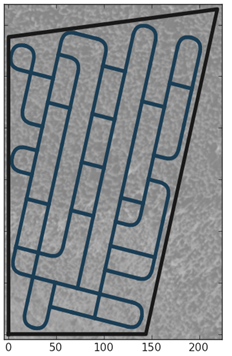Facts:
Project timetable: 2015-01-01 to 2018-12-31
Co-financers: Formas, project nr. 942-2015-62
Project partners: SLU, Umeå University, Luleå University of Technology, Oregon State University
Project budget: 4 457 000 SEK

Increased interest in forest based ecosystem services requires new solutions on how our forests are used. An obvious improvement is to be more careful in conventional forestry.
In Swedish forestry, large volumes of heavy timber are transported to road-side by machines. Our objective is to minimize damage from such off-road driving by developing site and time specific methods to help the operator choose the most appropriate route. The challenge is to do this simultaneously for both machines (harvester and forwarder) used in the operation, and with both ecological and economic objectives. This will be done by an orchestrated integration of route planning based on mapped land characteristics (e.g. depth-to-water and airborne laser scanning maps) and sensor-based real time motion planning for the fine tuning of where to drive and not.
The project will provide optimized suggestions of where to drive to minimize soil damage and distance driven, with conciderations taken to variation in e.g. soil types, moisture content, slope, streams, previous striproads etc. Thus, the results are beneficial both on local scale, with decreased soil and water damage, and on global scale, with reductions in fuel consumption and emissions.
Project timetable: 2015-01-01 to 2018-12-31
Co-financers: Formas, project nr. 942-2015-62
Project partners: SLU, Umeå University, Luleå University of Technology, Oregon State University
Project budget: 4 457 000 SEK
Ola Lindroos, Professor
Department of Forest Biomaterials and Technology, SLU
ola.lindroos@slu.se, 090-786 86 36